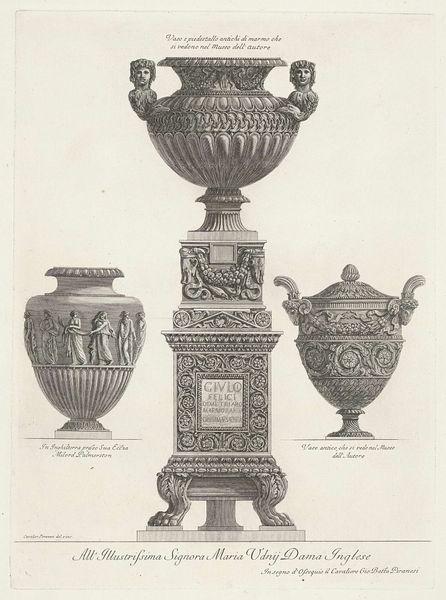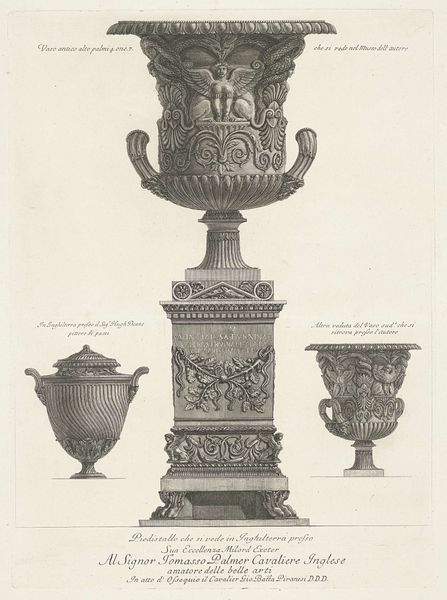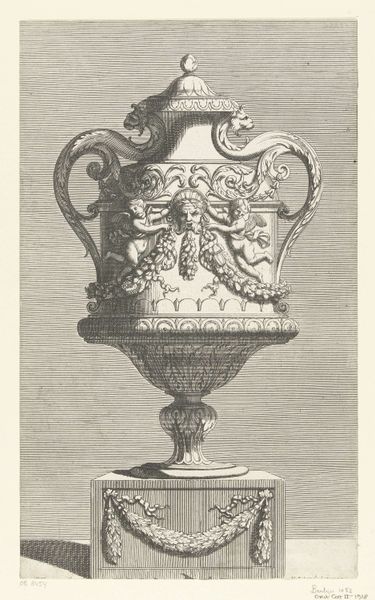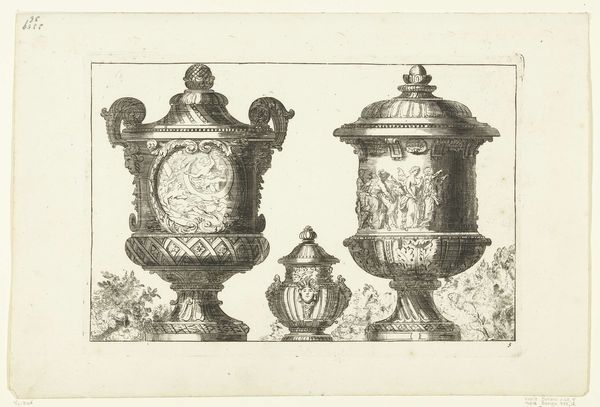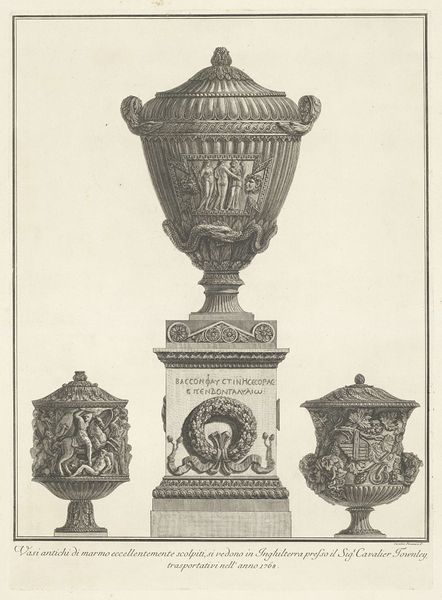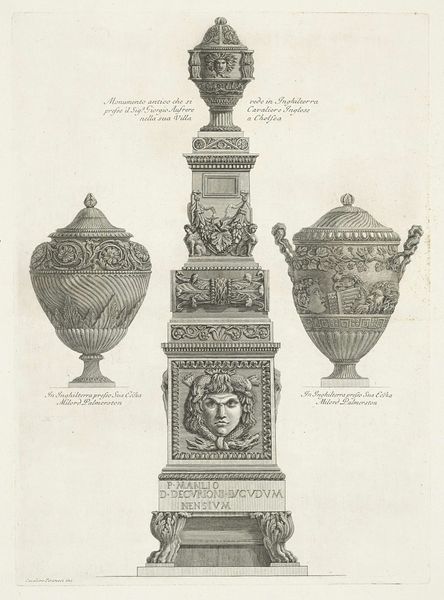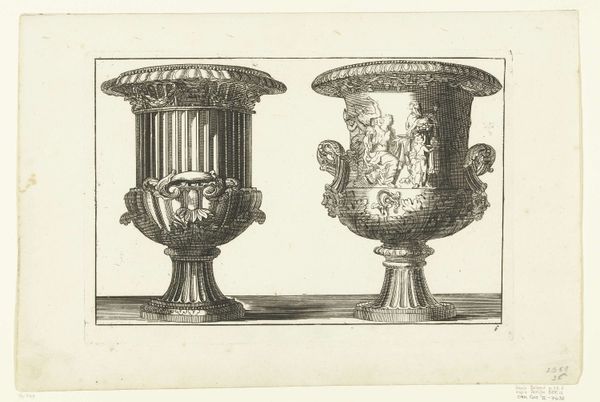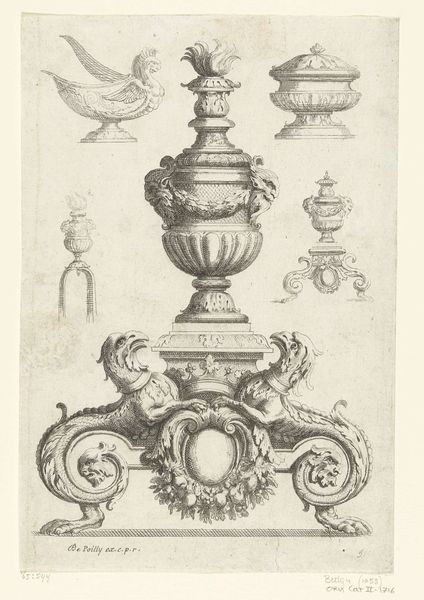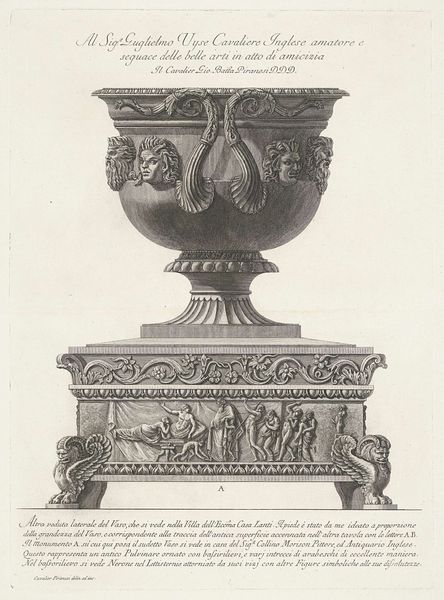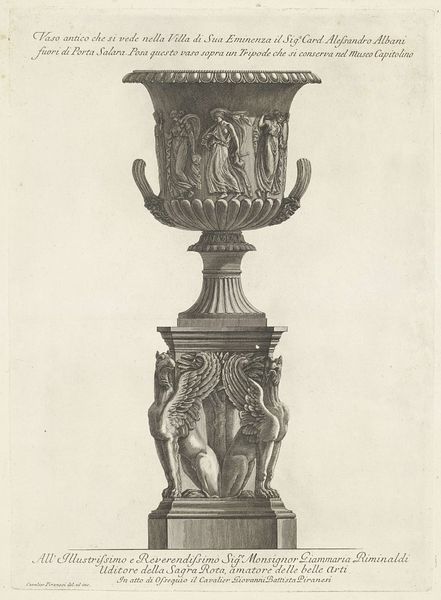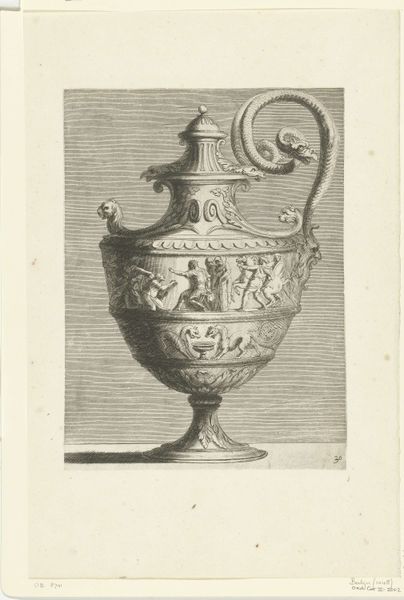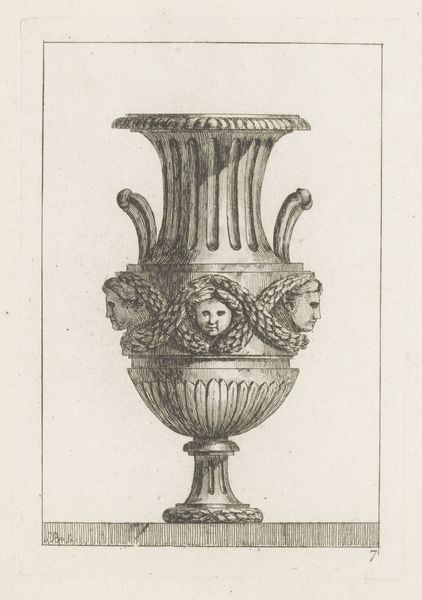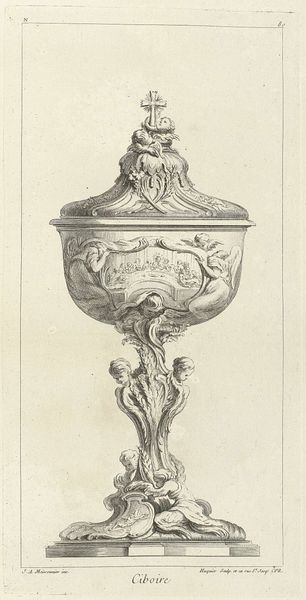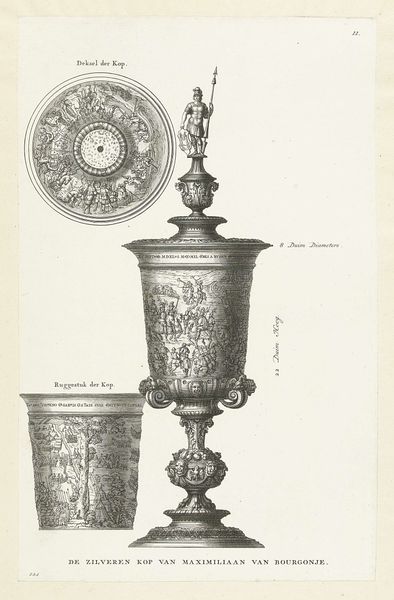
print, metal, etching, engraving, architecture
#
neoclacissism
# print
#
metal
#
etching
#
old engraving style
#
form
#
geometric
#
line
#
decorative-art
#
italian-renaissance
#
engraving
#
architecture
Dimensions: height 533 mm, width 388 mm
Copyright: Rijks Museum: Open Domain
Editor: Here we have Giovanni Battista Piranesi's "Drie vazen waarvan een op voetstuk," created in 1778. It's an etching and engraving, giving it such precise linework. I am immediately struck by the level of detail – it feels like I could get lost in it! What stands out to you? Curator: Well, beyond the exquisite detail, I see Piranesi engaging in a visual argument about power and taste in the late 18th century. Think about it: here he’s meticulously documenting, almost celebrating, these elaborate vases. But for whom, and to what end? Editor: Are you saying he might be critiquing something? Curator: Precisely! The Neoclassical style was becoming fashionable, embraced by elites who sought to connect with the perceived virtues of the Roman Republic and Empire. Piranesi, by presenting these objects as desirable, might also be subtly commenting on the emerging consumer culture and how objects mediated social standing. The form takes centre stage. Is he reinforcing that society’s tastes, or questioning them? Editor: I hadn't considered that angle at all. So the image itself participates in the society it depicts. And it’s dedicated to “A Sua Eccellenza Miledi Maria Fox…” Was she a patron? Curator: Almost certainly a member of the elite Piranesi was targeting and serving. What better way to spread and solidify Neoclassical principles, in the form of decorative art? Now consider, if he only created such objects through printed works, would that still be considered decorative art? Editor: It sounds like he's navigating a complex web of patronage, artistry, and societal commentary all at once. I learned a lot. Thank you! Curator: The pleasure was mine. It’s always about asking: Who benefits from this image, and whose values does it promote?
Comments
No comments
Be the first to comment and join the conversation on the ultimate creative platform.
